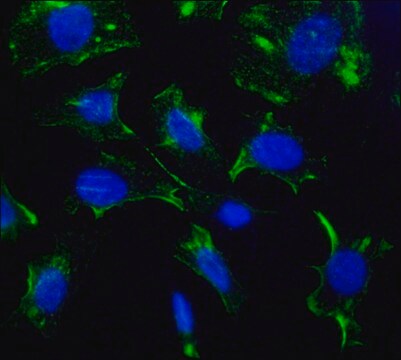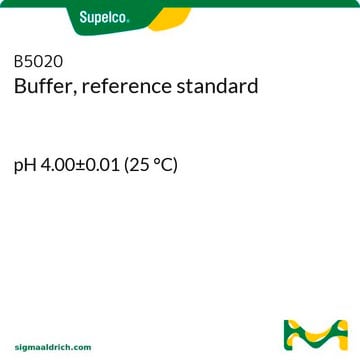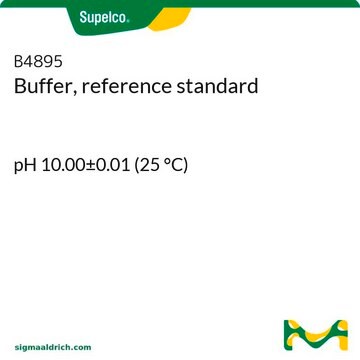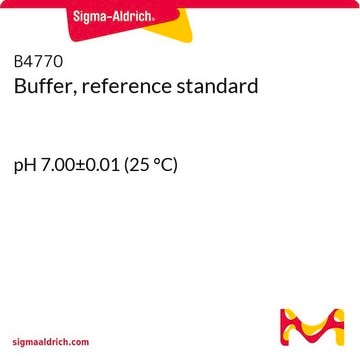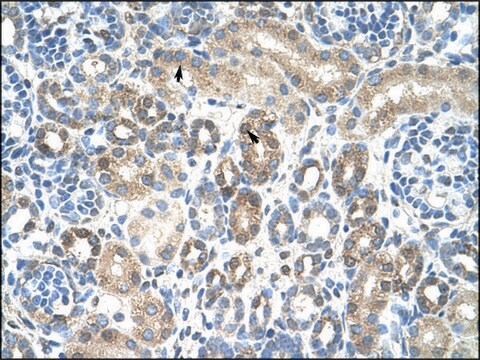일반 설명
We are committed to bringing you greener alternative products, which adhere to one or more of The 12 Principles of Green Chemistry.This antibody is Preservative-free, produced without the harm or sacrifice of animals and exceptionally stable to allow for ambient shipping and storage if needed and thus aligns with "Waste Prevention", "Designing Safer Chemicals" and "Design for Energy Efficiency".
Click here for more information.
ZooMAb® antibodies represent an entirely new generation of recombinant monoclonal antibodies.Each ZooMAb® antibody is manufactured using our proprietary recombinant expression system, purified to homogeneity, and precisely dispensed to produce robust and highly reproducible lot-to-lot consistency. Only top-performing clones are released for use by researchers. Each antibody is validated for high specificity and affinity across multiple applications, including its most commonly used application. ZooMAb® antibodies are reliably available and ready to ship when you need them.
특이성
Clone 1D10 is a Rabbit recombinant monoclonal antibody that specifically detects Caveolin-1. It targets an epitope within 19 amino acids from the N-terminal region.
면역원
KLH-conjugated linear peptide corresponding to 19 amino acids from the N-terminal region of human Caveolin-1.
애플리케이션
Quality Control Testing
Evaluated by Western Blotting in C6 cell lysate.
Western Blotting Analysis: A 1:1,000 dilution of this antibody detected Caveolin-1 in C6 cell lysate.
Tested applications
Western Blotting Analysis: A 1:1,000 dilution from a representative lot detected Caveolin-1 in lysates from Cos-7 and HeLa cells and from Mouse Lung tissue.
Immunocytochemistry Analysis: A 1:1,000 dilution from a representative lot detected Caveolin-1 in A431, HeLa, and NIH3T3 cells.
Affinity Binding Assay: A representative lot of this antibody bound Caveolin-1 peptide with a KD of 7.3 x 10-8 in an affinity binding assay.
Immunohistochemistry (Paraffin) Analysis: A 1:100 dilution from a representative lot detected Caveolin-1 in human liver tissue sections.
Note: Actual optimal working dilutions must be determined by end user as specimens, and experimental conditions may vary with the end user
표적 설명
Caveolin-1 (UniProt: Q03135) is encoded by the CAV1 (also known as CAV) gene (Gene ID: 857) in human. Three caveolin genes are expressed in mammals and are designated as caveolin-1, -2, and -3. Most mammalian tissues express at least one of these isoforms. Caveolin-1 is expressed in skeletal muscle, liver, stomach, lung, brain, kidney and heart. Caveolin-1 and -2 are usually co-expressed and assemble into hetero-oligomers in the endoplasmic reticulum and Golgi apparatus. Two isoforms of caveolin-1 have been reported that are produced by alternative initiation. It has two cytoplasmic domains (aa 2-104 and 126-178) and an intramembrane domain (aa 105-125). The primary structure of caveolin-1 contains two serine residues, both residing in a phosphorylation consensus sequence and flanked by a regulatory scaffolding domain. Serine 37 site represents a PKC consensus site, while Serine 88 is believed to be phosphorylated by CK II alpha. Caveolin-1 acts as a scaffolding protein within caveolar membranes and is shown to interact directly with G-protein alpha subunits to functionally regulate their activity. It is also involved in the costimulatory signal essential for T-cell receptor (TCR)-mediated T-cell activation. It can bind to DPP4 and induce T-cell proliferation and NF-kappa-B activation in a T-cell receptor/CD3-dependent manner. Mutations in CAV1 gene are known to cause Congenital generalized lipodystrophy 3 that is characterized by a near complete absence of adipose tissue, extreme insulin resistance, hypertriglyceridemia, and early onset of diabetes. Some mutations have also been linked to primary pulmonary hypertension with plexiform lesions of proliferating endothelial cells in pulmonary arterioles leading to elevated pulmonary arterial pression, right ventricular failure, and death. This ZooMAb® recombinant monoclonal antibody, generated by our propriety technology, offers significantly enhanced specificity, affinity, reproducibility, and stability over conventional monoclonals. (Ref.: Liu, P., et al. (2002). J. Biol. Chem. 277 (44); 41295-41298; Garver, WS., et al. (1999). Biochem. Biophys. Acta 143 (1453); 193-206).
물리적 형태
Purified recombinant rabbit monoclonal antibody IgG, lyophilized in PBS, 5% Trehalose, normal appearance a coarse or translucent resin. The PBS/trehalose components in the ZooMAb formulation can have the appearance of a semi-solid (bead like gel) after lyophilization. This is a normal phenomenon. Please follow the recommended reconstitution procedure in the data sheet to dissolve the semi-solid, bead-like, gel-appearing material. The resulting antibody solution is completely stable and functional as proven by full functional testing. Contains no biocide or preservatives, such as azide, or any animal by-products. Larger pack sizes provided as multiples of 25 μL.
재구성
300 μg/mL after reconstitution at 25 μL per vial. Please refer to guidance on suggested starting dilutions and/or titers per application and sample type.
저장 및 안정성
Recommend storage of lyophilized product at 2-8°C; Before reconstitution, micro-centrifuge vials briefly to spin down material to bottom of the vial; Reconstitute each vial by adding 25 μL of filtered lab grade water or PBS; Reconstituted antibodies can be stored at 2-8°C, or -20°C for long term storage. Avoid repeated freeze-thaws.
법적 정보
ZooMAb is a registered trademark of Merck KGaA, Darmstadt, Germany
면책조항
Unless otherwise stated in our catalog or other company documentation accompanying the product(s), our products are intended for research use only and are not to be used for any other purpose, which includes but is not limited to, unauthorized commercial uses, in vitro diagnostic uses, ex vivo or in vivo therapeutic uses or any type of consumption or application to humans or animals.


